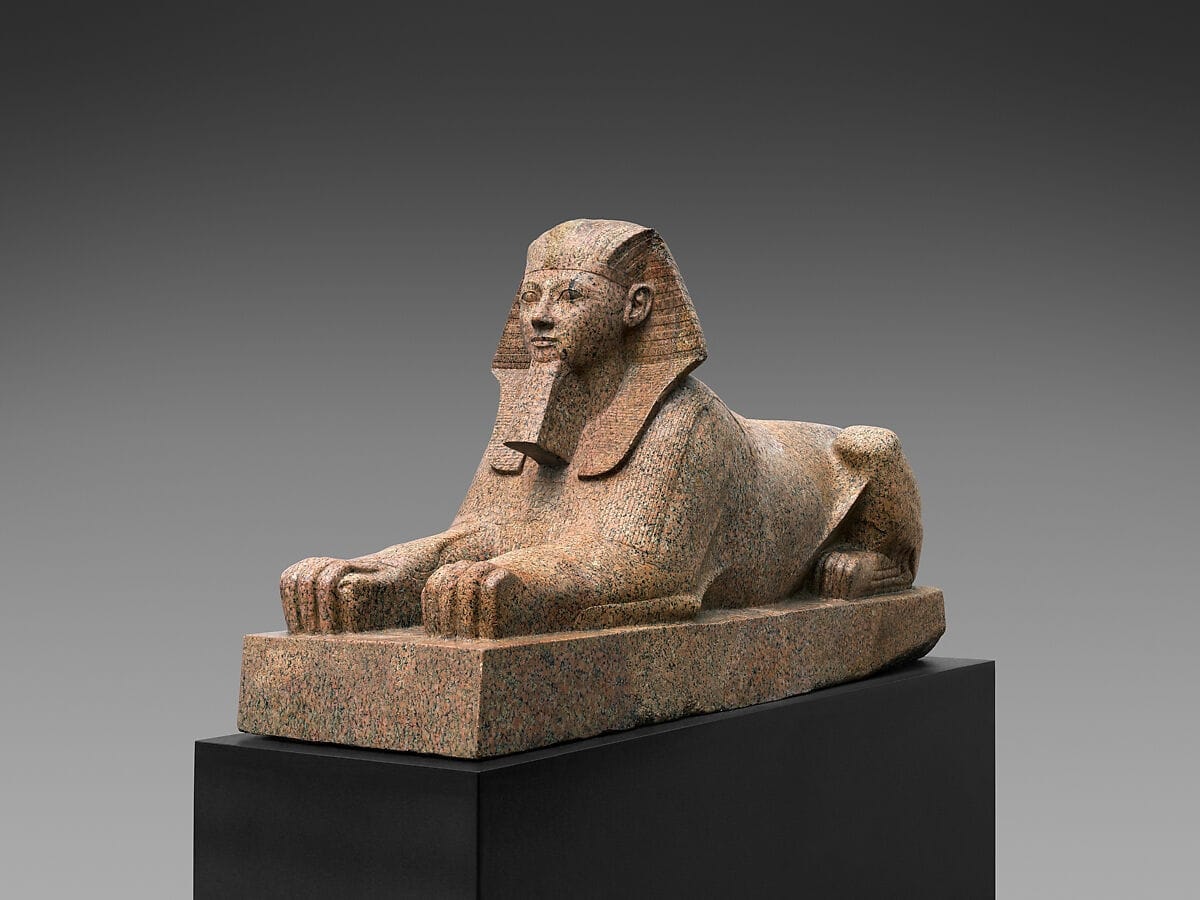The Sphinx: The Silent Guardian of the Pyramids

◾For thousands of years, the Great Sphinx has stood tall on the Giza Plateau, an eternal guardian of the pyramids, a silent voice telling the story of a civilization that continues to astonish the world. This colossal statue, carved from limestone, depicts a mythical creature with the head of a human and the body of a lion, combining strength and wisdom in a single image.
◾The name “Sphinx” goes back to the ancient Egyptians, who called it “Ho-Ra-Em-Akhet,” meaning “Horus on the horizon,” while the Greeks called it “Sphinx,” meaning “strangler.” It is believed that the statue was erected during the reign of King Khafre around 2500 BC, especially since its facial features resemble those of his famous statues. Despite this, there is still considerable debate among researchers about the identity of its builder. 📏 The Sphinx is approximately 73 meters long and 20 meters high, making it the largest statue carved from a single block of rock in the world. 🌍 It was originally covered with a layer of colored plaster, with the face painted red 🔴 and the royal cap blue 💙 and yellow 💛, remnants of which are still visible today.
◾But over the centuries, the Sphinx has been subject to erosion and destruction; its nose was broken in the Middle Ages, not by Napoleon, as some believe. Its royal beard was also lost, with only fragments remaining, preserved in the Egyptian Museum in Cairo and the British Museum. Between its claws, King Thutmose IV placed a famous stela known as the “Dream Stele,” which tells how, when he was a prince, he saw the Sphinx in a dream covered in sand and promised to give it the king if he removed the sand. Indeed, Thutmose IV became king, and the Sphinx was considered the reason for fulfilling his prophecy.
◾The statue was not just a monumental work of art, but a sacred religious symbol. The ancient Egyptians associated it with the god Ra-Horakhty, considering it the embodiment of the sun and the protector of royal tombs. Over the ages, myths surrounded it. The Greeks depicted it in their tales as a creature that poses riddles and destroys those who fail to answer them. Modern myths, meanwhile, have woven stories of secret chambers and hidden tunnels beneath it. Some even link it to a legendary library dating back to the lost civilization of Atlantis.
◾Despite all these tales, what is certain is that the Sphinx has always been a focus of interest for rulers who have attempted to restore it, from the time of the Pharaohs to the modern era. Today, it still stands, attracting millions of visitors every year , who stand in awe before it, wondering about its secrets that time has yet to reveal.
◾The Sphinx is not just a statue… It is the eternal guardian that witnessed the birth of the pyramids, and holds the secrets of a civilization that continues to amaze the world. Despite the passage of thousands of years, the Sphinx will remain an immortal symbol that combines strength, wisdom, and mystery.
◾️Article by Eman Sayed..

